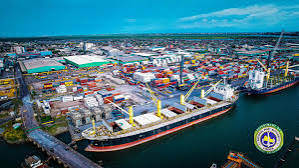Nigeria’s Looming Debt Burden: A Deep Dive into Projected Borrowings and Fiscal Challenges
Nigeria’s fiscal landscape is poised for a significant shift in the latter half of 2025, with analysts predicting a substantial increase in external borrowings. CardinalStone, in its mid-year outlook report, projects that the Federal Government may seek as much as N4.90 trillion from international sources. This represents a notable departure from the first half of the year, where the government primarily relied on domestic borrowing through Treasury Bills and Bonds, raising approximately N3 trillion. With a projected deficit of around N14 trillion for the year, this implies a substantial funding gap that needs to be addressed in the coming months. The government’s anticipated external borrowing spree is driven by several factors, including the need to finance a maturing Eurobond and associated coupons, as well as the pursuit of concessionary loans from multilateral institutions. This external borrowing push comes amidst concerns about the sustainability of Nigeria’s debt profile and the potential risks associated with increasing reliance on foreign creditors.
The dominance of domestic borrowing in the first half of 2025 raises several concerns. The heavy reliance on short-term instruments like Treasury Bills, as highlighted by Afrinvest, creates a significant rollover risk. This means that the government faces the challenge of refinancing these short-term debts frequently, exposing it to potential interest rate volatility and market fluctuations. Furthermore, this approach contributes to a duration imbalance in the debt portfolio, with a disproportionate share of debt maturing in the short term, increasing refinancing pressures. A healthier debt profile would involve a more balanced mix of short-, medium-, and long-term debt, mitigating refinancing risks and smoothing out debt service payments.
The planned increase in external borrowings, while potentially helpful in addressing the immediate funding gap, also introduces its own set of challenges. External debt, often denominated in foreign currencies, exposes the Nigerian government to exchange rate risks. Fluctuations in the exchange rate can significantly impact the cost of servicing and repaying these debts, increasing the burden on public finances. Moreover, relying on external borrowings can create dependence on foreign creditors and potentially limit policy autonomy. Striking a balance between domestic and external borrowing is crucial to managing risks and ensuring fiscal sustainability.
Several factors could influence the trajectory of Nigeria’s fiscal outlook in the coming months. One key factor is the level of remittances from the Nigerian National Petroleum Company Limited (NNPCL) to the Federation Account. Currently, remittances are estimated to be around 50% of potential, largely due to unresolved subsidy-related claims. A resolution of these claims and an increase in NNPCL remittances could significantly boost government revenue and alleviate some of the fiscal pressure. However, the current geopolitical climate, with its inherent uncertainty, could impact oil prices and production, potentially impacting the NNPCL’s ability to contribute to government coffers.
The analysts at CardinalStone have pegged their oil price estimate at $65 per barrel, despite ongoing geopolitical tensions. They also project a revised oil production figure of 1.68 million barrels per day. These projections are crucial for Nigeria’s fiscal outlook, as oil revenue remains a significant contributor to government finances. However, the unpredictable nature of global oil markets and potential disruptions to production pose significant downside risks to these projections. Any shortfall in oil revenue would exacerbate the fiscal deficit and increase the pressure on the government to borrow more.
Overall, Nigeria’s fiscal outlook for the remainder of 2025 is characterized by significant challenges and uncertainties. The projected increase in external borrowings, while necessary to address the immediate funding gap, introduces exchange rate risks and potential dependence on foreign creditors. The heavy reliance on short-term domestic borrowing creates rollover risk and duration imbalance. The performance of oil revenue, dependent on global market conditions and domestic production levels, remains a key determinant of the government’s ability to meet its fiscal obligations. Careful management of debt, prudent fiscal policies, and efforts to diversify the economy are crucial for navigating these challenges and ensuring long-term fiscal sustainability. A strategic approach to borrowing, prioritizing long-term debt and exploring alternative financing mechanisms, is essential to mitigate refinancing risks and reduce the burden on future generations. Finally, enhancing transparency and accountability in public finance management will be crucial for building trust and ensuring the efficient utilization of borrowed resources.














